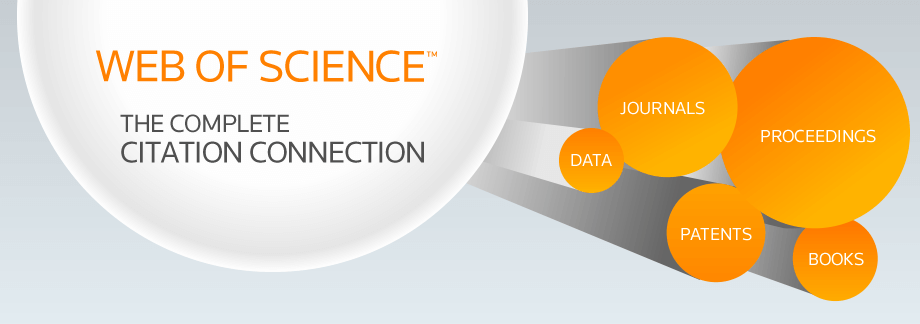INTERNATIONAL JOURNAL OF CREATIVE RESEARCH THOUGHTS - IJCRT (IJCRT.ORG)
International Peer Reviewed & Refereed Journals, Open Access Journal
IJCRT Peer-Reviewed (Refereed) Journal as Per New UGC Rules.
ISSN Approved Journal No: 2320-2882 | Impact factor: 7.97 | ESTD Year: 2013
Call For Paper - Volume 13 | Issue 11 | Month- November 2025
Scholarly open access journals, Peer-reviewed, and Refereed Journals, Impact factor 7.97 (Calculate by google scholar and Semantic Scholar | AI-Powered Research Tool) , Multidisciplinary, Monthly, Indexing in all major database & Metadata, Citation Generator, Digital Object Identifier(CrossRef DOI)
Contact Us Click Here
WhatsApp Contact Click Here
Volume 12 | Issue 6
| IJCRT Journal front page | IJCRT Journal Back Page |
Paper Title: PASCHIM RAJASTHAN MAI PAYA JANE WALA UNTH
Publisher Journal Name: IJCRT
Your Paper Publication Details:
Published Paper ID: - IJCRT2406512
Register Paper ID - 263933
Title: PASCHIM RAJASTHAN MAI PAYA JANE WALA UNTH
Author Name(s): RAM SINGH
Publisher Journal name: IJCRT
Volume: 12
Issue: 6
Pages: e645-e652
Year: June 2024
Downloads: 166
Abstract
Licence: creative commons attribution 4.0
License
Paper Title: AI for a Sustainable Future: A Comprehensive Review of AI Applications for Climate Change
Publisher Journal Name: IJCRT
Your Paper Publication Details:
Published Paper ID: - IJCRT2406511
Register Paper ID - 263770
Title: AI FOR A SUSTAINABLE FUTURE: A COMPREHENSIVE REVIEW OF AI APPLICATIONS FOR CLIMATE CHANGE
Author Name(s): Ramprasad Bera
Publisher Journal name: IJCRT
Volume: 12
Issue: 6
Pages: e640-e644
Year: June 2024
Downloads: 154
Abstract
The integration of Artificial Intelligence (AI) in addressing climate change presents significant opportunities for tackling this global challenge. This review examines the use of AI in climate modeling, optimizing renewable energy, reducing carbon footprints, and environmental monitoring. It emphasizes AI's role in improving prediction accuracy, optimizing energy systems, reducing emissions, and enhancing monitoring capabilities. Despite its potential, AI's contribution to climate mitigation faces obstacles such as data gaps, high computational costs, and the need for interdisciplinary collaboration. This analysis underscores the importance of improving data quality, developing energy-efficient AI algorithms, and fostering interdisciplinary connections to fully leverage AI's potential for a sustainable future. Strategic decision-making and evidence-based governance are crucial for maximizing the benefits of AI while minimizing its environmental impact..
Licence: creative commons attribution 4.0
License
Keywords
Acoustic Sensors, Climate Change, Predictive Maintenance, Energy Consumption, Wildlife Monitoring, Deep Learning (DL), Machine Learning (ML), Data Availability, Smart Grid Management, Environmental Monitoring, Reinforcement Learning (RL), Renewable EnergyOptimization, Biodiversity Monitoring, Computational Resources, Artificial Intelligence (AI), Earth System Models, Supply Chain Optimization, Carbon Footprint Reduction, Climate Modelling, Computer Vision, Interdisciplinary Collaboration, Data
License
Paper Title: FINANCIAL SERVICES AND ECONOMIC GROWTH IN TANZANIA: ORDINARY LEAST SQUARE APPROACH
Publisher Journal Name: IJCRT
Your Paper Publication Details:
Published Paper ID: - IJCRT2406510
Register Paper ID - 263900
Title: FINANCIAL SERVICES AND ECONOMIC GROWTH IN TANZANIA: ORDINARY LEAST SQUARE APPROACH
Author Name(s): Rabieth Robert Shani, Godlove charles Kainga, Emmanuel Alipipi
Publisher Journal name: IJCRT
Volume: 12
Issue: 6
Pages: e630-e639
Year: June 2024
Downloads: 158
Abstract
Purpose - The purpose of this study is to empirically study the relationship between financial services and economic growth, and contribute to the already available literature on the relationship of financial services or sectors to economic growth Design/methodology/approach - The study used the Ordinary least square regression approach. The sample covered yearly time-series data from 1990 to 2022, i.e. 32 years. Findings - The results suggest that financial services related to economic growth were as Liquid liability as % of GDP and the commercial bank branch as per 100,000 positively correlated to the economic growth and investment and saving and capital formation negatively correlated to economic growth, given the financial liberation and reforms the country is currently enjoying, the country has not fully brought the desired positive effects on economic growth.
Licence: creative commons attribution 4.0
License
Keywords
Financial service, Economic growth, OLS regression, financial Liberalisation
License
Paper Title: Experimental Performance Analysis and Cooling Effect of 360 Degree Air Cooler for Vertical Axis
Publisher Journal Name: IJCRT
Your Paper Publication Details:
Published Paper ID: - IJCRT2406509
Register Paper ID - 263889
Title: EXPERIMENTAL PERFORMANCE ANALYSIS AND COOLING EFFECT OF 360 DEGREE AIR COOLER FOR VERTICAL AXIS
Author Name(s): Prof. (Dr.) Umesh S. Mugale, Rohit U. Mugale, U. M. Rawat
Publisher Journal name: IJCRT
Volume: 12
Issue: 6
Pages: e621-e629
Year: June 2024
Downloads: 131
Abstract
In India energy demands are expected to be more than double by 2030, and there is a pressing need to develop ways to conserve energy for future generations. Thus energy consumption can be reduced drastically by using energy efficient appliances. In India, the Union Ministry of power's research pointed out that about 20-25% of the total electricity utilized in government buildings in India is wasted due to unproductive design, resulting in an annual energy related financial loss of about Rs 1.5 billion. Conventional Heating Ventilation and Air Conditioning systems (HVAC) consume approximately 50% of the building energy. This type of air conditioning is therefore neither eco-friendly or sustainable. Selection of proper air conditioning system for buildings can not only help the country to save electrical energy but also reduce green house emissions. As renewable energies become a growing part of the energy, the focus is being put on increased performance and efficiency of proven sources such as horizontal axis air coolers. Generally air coolers are predominantly horizontal-axis, three-bladed with a fixed blade design. The domestic air coolers, which are cost effective, play a positive role in providing human comfort during hot weather. However the performance is dissatisfactory in the high humid regions. This project paves a way to investigate the performance of air cooler integrated by eliminating the problem of rise in humidity that usually encountered in the conventional air cooler. The objective of the present invention is to provide cooled air to maintain the room temperature according to the requirement. This paper presents a simplified analysis model for Cooling Effect of 360 degree Air Cooler for Vertical Axis to make computation tractable with better performance and efficiency by varying speed, number of blades and energy utilization and comparing suitable for cooling effect over a site-specific air cooling distribution.
Licence: creative commons attribution 4.0
License
Keywords
Energy consumption, cooling effect, vertical axis
License
Paper Title: Cybersecurity Awareness - A comprehensive review on cybersecurity, data privacy, AI & IOT security
Publisher Journal Name: IJCRT
Your Paper Publication Details:
Published Paper ID: - IJCRT2406508
Register Paper ID - 263834
Title: CYBERSECURITY AWARENESS - A COMPREHENSIVE REVIEW ON CYBERSECURITY, DATA PRIVACY, AI & IOT SECURITY
Author Name(s): Harsh Vardhan Singh, Nisha Rathore
Publisher Journal name: IJCRT
Volume: 12
Issue: 6
Pages: e614-e620
Year: June 2024
Downloads: 143
Abstract
This research paper provides a thorough examination of the evolving landscape of cyber security threats and the corresponding strategies employed to mitigate them. In an era where technology plays an integral role in everyday life, the importance of safeguarding digital assets cannot be overstated. The paper explores various categories of cyber threats, including malware, data breaches, and social engineering attacks, while also discussing emerging threats such as AI-driven cyberattacks and the challenges posed by the Internet of Things (IoT). Furthermore, it delves into the multifaceted approaches employed by organizations and individuals to defend against these threats, including encryption, intrusion detection systems, and user awareness training. By shedding light on the latest developments in the field, this paper serves as a valuable resource for professionals and researchers seeking to stay ahead in the ongoing battle for cyber security.
Licence: creative commons attribution 4.0
License
Keywords
cybersecurity, threats, robotics, computer network, firewall, malware, cybercrime
License
Paper Title: INVESTIGATION ONWELDABILITY OF AA6063 ALUMINIUM ALLOY BY USING TUNGSTEN INERT GAS WELDING
Publisher Journal Name: IJCRT
Your Paper Publication Details:
Published Paper ID: - IJCRT2406507
Register Paper ID - 263888
Title: INVESTIGATION ONWELDABILITY OF AA6063 ALUMINIUM ALLOY BY USING TUNGSTEN INERT GAS WELDING
Author Name(s): Mr. Soumojit DasGupta, Mrs. Thia Paul, Mr. Munshi Rasidul Islam, Ankit Das, Kushal Mohanta
Publisher Journal name: IJCRT
Volume: 12
Issue: 6
Pages: e601-e613
Year: June 2024
Downloads: 198
Abstract
Welding is a permanent joining process both by using gas torch or electricity to generate heat and also by using filler materials. Similar materials or dissimilar materials both can be joined by implementing welding process. Pressure can be used instead of filler materials to get the permanent joint. For fabricating various engineering components Welding has been considered as one of the best process in the recent years. Various applications include constructions, automotive industries, ship building, aerospace, etc. Gas Tungsten Arc Welding (GTAW) is one of the majorly applied welding processes. There are different welding factors which determine the soundness of weld and investigate the weldability of a metal. Weldability is defined as the easiness with which two or more similar or dissimilar metals can be joined without any problem. In GTAW, the Heat Input and the Gas Flow Rate are two major factors during the welding process. They have an influence on Weld Bead Geometry. One of the important characteristics of welding is consider as weld beads. Metals weldability has been determined by reinforcement height, width if the weld beads, and depth of penetration. In the present research work the Tungsten Gas Arc Welding (GTAW) was carried on AA6063 aluminium alloy. of Response Surface Methodology (RSM) has been implemented to design the experiment that too CCD (Central Composite Design). Gas Flow Rate and Heat Input are the two factors and three level has been considered to create DOE. Bead geometry parameters were studied for different combinations of the mentioned factors. The influence of each factor on the bead geometry was analysed using ANOVA. It was observed that the maximum depth of penetration was obtained at heat input values of 0.36-0.4 kJ/mm and gas flow rate of 15.5 l/min. Minimum bead width is recommended and this was obtained at heat input of 0.45-0.48 kJ/mm and gas flow rate of 15-16 l/min. Nominal positive reinforced height is acceptable and this is obtained through the entire range of heat input and gas flow rate of 10.5-13.5 l/min.
Licence: creative commons attribution 4.0
License
Keywords
Weldability, GTAW, Bead Geometry, Response Surface Methodology, ANOVA
License
Paper Title: Nearest Neighbour Analysis of Bassi Tehsil (Jaipur Rural)
Publisher Journal Name: IJCRT
Your Paper Publication Details:
Published Paper ID: - IJCRT2406506
Register Paper ID - 263903
Title: NEAREST NEIGHBOUR ANALYSIS OF BASSI TEHSIL (JAIPUR RURAL)
Author Name(s): Dr. Akhilesh Vaishnava
Publisher Journal name: IJCRT
Volume: 12
Issue: 6
Pages: e595-e600
Year: June 2024
Downloads: 186
Abstract
Nearest Neighbour Analysis, also known as K-nearest neighbour (KNN) and neighbourhood component analysis (NCA), is a method that stores training samples in an n-dimensional pattern space and calculates the distance between samples using a distance metric formula. An example of the search for order in settlement or other patterns in the landscape is the use of a technique known as nearest neighbour analysis. This attempts to measure the distributions according to whether they are clustered, random or regular. Here, settlement distribution may be expected to be regular, rather than the random or scattered pattern.
Licence: creative commons attribution 4.0
License
Keywords
Clustered, Random, Hexagonal, Concentration, Dispersed, High concentration.
License
Paper Title: Chat-bot Assisted Multilingual Platform for Re use, Re-cycle, Re-sale , disposal of Industrial and Domestics material and Electronics
Publisher Journal Name: IJCRT
Your Paper Publication Details:
Published Paper ID: - IJCRT2406505
Register Paper ID - 263825
Title: CHAT-BOT ASSISTED MULTILINGUAL PLATFORM FOR RE USE, RE-CYCLE, RE-SALE , DISPOSAL OF INDUSTRIAL AND DOMESTICS MATERIAL AND ELECTRONICS
Author Name(s): Prerana Pramod Patil, Zameer ahamed khan, Megha Dupadalamath, Sunita Patil, Dr. Naveenkumar T Rudrappa
Publisher Journal name: IJCRT
Volume: 12
Issue: 6
Pages: e590-e594
Year: June 2024
Downloads: 141
Abstract
This paper introduces a Chat-bot Assisted Multilingual Platform for Re-use, Re-Cycle, Re-Sale, Disposal of Industrial Material, and Electronics," represents a pivotal intersection of technology and environmental responsibility. In the past, waste management posed challenges, leaving consumers unaware of proper disposal methods. The digital age, chatbots emerged as intelligent conversational agents, bridging the gap between users and information on industrial material and electronics. Originally designed for customer support, chatbots evolved into sophisticated virtual assistants, automating tasks. In our project, chatbots serve as a linchpin, creating an efficient, user-friendly platform for re-use, recycling, sale, and disposal. The initiative addresses the multilingual aspect, seamlessly integrating English, Hindi, and Kannada to ensure inclusivity and accessibility. The project classifies industrial materials, distinguishing plastics for informed decision-making. In electronics, it emphasizes reuse and recycling, diverting devices from landfills. In essence, it stands as a beacon for technology-driven environmental responsibility. The multilingual interface fosters familiarity, transcending linguistic barriers.
Licence: creative commons attribution 4.0
License
Keywords
This paper introduces a Chat-bot Assisted Multilingual Platform for Re-use, Re-Cycle, Re-Sale, Disposal of Industrial Material, and Electronics," represents a pivotal intersection of technology and environmental responsibility. In the past, waste management posed challenges, leaving consumers unaware of proper disposal methods. The digital age, chatbots emerged as intelligent conversational agents, bridging the gap between users and information on industrial material and electronics. Or
License
Paper Title: The Bharatiya Nyaya Sanhita: A Comprehensive Overview of India's New Criminal Law
Publisher Journal Name: IJCRT
Your Paper Publication Details:
Published Paper ID: - IJCRT2406504
Register Paper ID - 262752
Title: THE BHARATIYA NYAYA SANHITA: A COMPREHENSIVE OVERVIEW OF INDIA'S NEW CRIMINAL LAW
Author Name(s): Adv. Sanjay Sarraf, Prof. (Dr.) Deepak Kumar Srivastav
Publisher Journal name: IJCRT
Volume: 12
Issue: 6
Pages: e586-e589
Year: June 2024
Downloads: 6385
Abstract
India's legal framework is witnessing a transformative shift with the introduction of the Bharatiya Nyaya Sanhita (BNS) Act, 2023. This new legislation aims to replace the Indian Penal Code (IPC) of 1860, bringing about significant changes to modernize the criminal justice system. Here, we delve into the key aspects, innovations, and implications of the BNS.
Licence: creative commons attribution 4.0
License
Keywords
BNS, The Bharatiya Nyaya Sanhita
License
Paper Title: EXPLORING THE BUSINESS MODELS IN THE INDUSTRY OF ELECTRIC GOLF CARTS: STRATEGIES, TRENDS AND MARKET DYNAMICS
Publisher Journal Name: IJCRT
Your Paper Publication Details:
Published Paper ID: - IJCRT2406503
Register Paper ID - 263776
Title: EXPLORING THE BUSINESS MODELS IN THE INDUSTRY OF ELECTRIC GOLF CARTS: STRATEGIES, TRENDS AND MARKET DYNAMICS
Author Name(s): Shubham Thete, Mukesh Deore, Priyanka Bhamare, Prof. D.D. Sancheti
Publisher Journal name: IJCRT
Volume: 12
Issue: 6
Pages: e579-e585
Year: June 2024
Downloads: 167
Abstract
Due to their effectiveness and eco-friendliness, electric golf carts are growing in popularity on golf courses. With the use of a literature review and data analysis, this research paper intends to present a cost report and business report on electric golf carts. The study examines electric golf cart pricing patterns and how they affect the golf cart market. According to the study's findings, electric golf carts are more cost- and environmentally-friendly than gas-powered golf carts.
Licence: creative commons attribution 4.0
License
Keywords
Electric Vehicles, Electric Golf Cart, Business model of electric Golf Cart & Analysis, Sector wise Analysis.
License
Paper Title: A Review on Comparative Analysis of 16-bit and 32-bit RISC Pipelined Processors by Verilog Design
Publisher Journal Name: IJCRT
Your Paper Publication Details:
Published Paper ID: - IJCRT2406502
Register Paper ID - 263841
Title: A REVIEW ON COMPARATIVE ANALYSIS OF 16-BIT AND 32-BIT RISC PIPELINED PROCESSORS BY VERILOG DESIGN
Author Name(s): Tejaswini D, Mrs Shrisha M R
Publisher Journal name: IJCRT
Volume: 12
Issue: 6
Pages: e573-e578
Year: June 2024
Downloads: 175
Abstract
This review paper presents a comparative analysis of 16-bit and 32-bit Reduced Instruction Set Computing (RISC) pipelined processors, with a focus on their design and implementation using Verilog Hardware Description Language (HDL). The study explores key architectural differences, performance metrics, and resource utilization associated with both processor types. By delving into the pipeline stages, instruction sets, and data paths, the review highlights the trade-offs between the two architectures in terms of complexity, speed, power consumption, and scalability. Detailed simulations and synthesis results will be analyzed to provide a comprehensive understanding of the advantages and limitations of each processor size. The findings aim to guide designers in selecting the appropriate processor configuration for specific applications, balancing the need for efficiency, cost, and performance. The paper concludes with insights into future trends in RISC processor design and potential areas for further research in the context of evolving computational demands and technological advancements.
Licence: creative commons attribution 4.0
License
Keywords
Keywords: RISC Architecture, Pipeline Stages, Verilog HDL, Performance Metrics, Resource Utilization
License
Paper Title: ATTENDENCE MONITORING USING FACE RECOGNITION
Publisher Journal Name: IJCRT
Your Paper Publication Details:
Published Paper ID: - IJCRT2406501
Register Paper ID - 263450
Title: ATTENDENCE MONITORING USING FACE RECOGNITION
Author Name(s): U.Sanjana, K.Santhoshini, P.Sanjana, G.Shivaja, Jim Reeves
Publisher Journal name: IJCRT
Volume: 12
Issue: 6
Pages: e568-e572
Year: June 2024
Downloads: 159
Abstract
Attendance tracking is a crucial aspect of daily operations in educational institutions, organizations, and offices. Traditionally, this task involves manual methods like calling out names or roll numbers, which can be time-consuming and prone to errors. The aim of this project is to revolutionize attendance management by implementing a Face Recognition-based system, automating the process and enhancing efficiency. This innovative system, installed in classrooms or designated areas, utilizes facial recognition technology to identify and mark attendance. Students' information, including their names, roll numbers, class, section, and photographs, is stored and trained within the system. OpenCV is employed to extract facial images for training purposes .The system operates by capturing images of individuals approaching the device before the start of the class. These images are then processed through several stages: facial detection using a Haar cascade classifier, facial recognition utilizing the LBPH (Local Binary Pattern Histogram) Algorithm, comparison of histogram data with the established dataset, and automatic attendance marking. An Excel sheet is generated and updated regularly with attendance information, ensuring accurate record-keeping. Overall, this project offers a modernized approach to attendance management, leveraging advanced technology to streamline processes and improve time management in educational and organizational settings.
Licence: creative commons attribution 4.0
License
Keywords
Face Recognition-based system, OpenCV, Haar cascade classifier, LBPH (Local Binary Pattern Histogram) Algorithm
License
Paper Title: RECENT PRACTICES IN OPTIMIZING STARTUP OPERATIONS THROUGH LEVERAGING ARTIFICIAL INTELLIGENCE FOR ENHANCED EFFICIENCY
Publisher Journal Name: IJCRT
Your Paper Publication Details:
Published Paper ID: - IJCRT2406500
Register Paper ID - 263789
Title: RECENT PRACTICES IN OPTIMIZING STARTUP OPERATIONS THROUGH LEVERAGING ARTIFICIAL INTELLIGENCE FOR ENHANCED EFFICIENCY
Author Name(s): Dr. Anurodh Godha
Publisher Journal name: IJCRT
Volume: 12
Issue: 6
Pages: e555-e567
Year: June 2024
Downloads: 154
Abstract
Amidst the dynamic and ever-changing business environment of today, entrepreneurs encounter a multitude of obstacles in streamlining their activities and attaining long-term expansion. Artificial intelligence (AI) integration has become a promising tool for improving efficiency, simplifying processes, and overcoming operational challenges in startup ecosystems. This paper examines the current use of artificial intelligence (AI) to improve the efficiency of startup operations. It discusses the importance of adopting AI, the main obstacles faced, and the rising trends in the startup industry. This paper explores the complex and diverse role of artificial intelligence (AI) in startup environments, using secondary data analysis. The paper highlights the potential of AI to revolutionize operations and enhance competitiveness by analyzing existing literature. Ethical AI practices are becoming increasingly important in the adoption of AI in startups. These policies prioritize transparency, justice, and responsibility in the decision-making processes driven by AI. Furthermore, it is crucial to make investments in AI-powered cybersecurity solutions in order to protect against ever-changing cyber threats and secure valuable data. In addition, the report emphasizes developing patterns such as the integration of artificial intelligence (AI) in edge computing. This integration provides startups with chances to analyze data in proximity to its origin, hence decreasing delays and facilitating instantaneous decision-making. Startups can improve their operational agility, responsiveness, and scalability by adopting these new trends and utilizing AI technologies.
Licence: creative commons attribution 4.0
License
Keywords
Artificial Intelligence, Startups, Operational Efficiency, Ethical AI, Cybersecurity, Emerging Trends.
License
Paper Title: Transformation Of Waste Bottles Into 3D Printing Filament
Publisher Journal Name: IJCRT
Your Paper Publication Details:
Published Paper ID: - IJCRT2406499
Register Paper ID - 263469
Title: TRANSFORMATION OF WASTE BOTTLES INTO 3D PRINTING FILAMENT
Author Name(s): Abhijeet S Mandule, Hemanshu H Mahajan, Akhilesh S Wagh, Vaibhav S Bhangale, Pankaj L Firake
Publisher Journal name: IJCRT
Volume: 12
Issue: 6
Pages: e546-e554
Year: June 2024
Downloads: 209
Abstract
The growing ecological disaster caused by plastic waste is one of the most urgent concerns of our day. Plastic, a substance once praised for its long-lasting and adaptable nature, has now become a lasting and poisonous kind of garbage, polluting our environments and bodies of water. This initiative, dubbed "Conversion of Waste Plastic Bottles into 3D Printing Filament," presents a ground breaking solution to this issue by transforming discarded plastic into a lucrative asset for the expanding 3D printing sector. The advent of 3D printing technology has brought about a significant transformation in several industries, such as manufacturing and healthcare, by facilitating the fabrication of intricate objects with exceptional accuracy. Nevertheless, the filaments often used in 3D printing, which are referred to as materials, frequently originate from finite resources, hence intensifying the ecological impact. This research suggests an alternate method by creating 3D printing filaments from recycled plastic bottles, so converting a widespread environmental pollution into a valuable resource. Our approach consists of collecting discarded plastic bottles, mostly made of polyethylene terephthalate (PET), which is a commonly used polymer in packaging. The bottles undergo a thorough cleaning, shredding, and controlled heating process using modern nozzle technology. Further, the liquefied plastic is forced out via a small opening to form slender threads, which are further cooled and coiled onto spools to produce filaments for 3D printing. This procedure not only redirects plastic trash away from landfills but also reduces the need for the manufacturing of new plastic, so contributing to a circular economy. The study further investigates the characteristics and efficiency of reused filaments in 3D printing applications. Initial findings suggest that the recycled filaments show similar quality to filaments that are commercially accessible, thereby proving the viability of this method. Moreover, the experiment highlights the possibility of producing filaments locally, which may help decrease emissions from shipping and promote self-reliance in 3D printing materials. Ultimately, this idea represents a fundamental change in how we handle trash and produce materials, transforming the issue of plastic waste into a viable option for environmentally-friendly manufacturing. Through the conversion of discarded plastic bottles into 3D printing filaments, we reduce the negative environmental effects of plastic waste and support the development of sustainable manufacturing methods. This programme demonstrates human creativity in addressing ecological concerns and highlights the capacity of new technology to promote sustainable development. This project represents progress towards a future in which garbage is not considered a final product, but rather a valuable.
Licence: creative commons attribution 4.0
License
Keywords
Sustainability, Waste Recycling, Plastic Waste, Plastic Bottles, 3D Printing Filament
License
Paper Title: Experimental Investigation of Plastic Grain Concrete Piles Using Temperature Sensor
Publisher Journal Name: IJCRT
Your Paper Publication Details:
Published Paper ID: - IJCRT2406498
Register Paper ID - 263283
Title: EXPERIMENTAL INVESTIGATION OF PLASTIC GRAIN CONCRETE PILES USING TEMPERATURE SENSOR
Author Name(s): Kirit R. Prajapati, Prof. Pratiti M. Bhatt, Prof. Ghansyamkumar B. Rathod
Publisher Journal name: IJCRT
Volume: 12
Issue: 6
Pages: e539-e545
Year: June 2024
Downloads: 147
Abstract
Nowadays, different types of replacement of sand by plastic grains in concrete is getting important in researches. In order to better understand the behavior of concrete piles during curing, exposure to different climatic conditions, and potential deterioration, this study investigates the compressive strength of plastic grain concrete pile by use of embedded temperature sensors. After analysing characteristics of different plastic grain concrete (low density polyethylene, high density polyethylene and polypropylene), HDPE (high density polyethylene) is more sustainable with concrete mix. For this study compressive strength of plastic grain (high density polyethylene) pile is compared with M20 grade concrete pile. During the casting process, temperature sensors are first strategically inserted into concrete piles at top, centre and bottom as part of the research. The exothermic hydration response may be examined by the continuous temperature data recording that these sensors will provide during the curing process. From temperature data maturity and strength is calculated using Nurse- Saul (MNS) function.
Licence: creative commons attribution 4.0
License
Keywords
Concrete pile, Plastic grain, LDPE, HDPE, Polypropylene, Temperature sensor
License
Paper Title: POSSIBLE CHALLENGES ON INDIA'S PATH TO REALIZING THE SUSTAINABLE DEVELOPMENT GOALS
Publisher Journal Name: IJCRT
Your Paper Publication Details:
Published Paper ID: - IJCRT2406497
Register Paper ID - 263711
Title: POSSIBLE CHALLENGES ON INDIA'S PATH TO REALIZING THE SUSTAINABLE DEVELOPMENT GOALS
Author Name(s): N JOHN SUKUMAR
Publisher Journal name: IJCRT
Volume: 12
Issue: 6
Pages: e534-e538
Year: June 2024
Downloads: 152
Abstract
In pursuit of sustainable development, global economies have banded together. This stands in stark contrast to earlier approaches, in which governments actively sought to advance their economies. Several natural resources have been exhausted and ecological balances have been upset because of nation's competing for economic development. This effect manifests itself in various ways, one of which is the acceleration of global warming. A solution that would make the world a better place for generations to come is urgently required because this endangers human life as we know it. To guarantee that development occurs in a manner that preserves and passes on to future generations undamaged natural resources, the phrase "sustainable development" was coined. This paper attempts to understand and analyze the challenges that India faces in reaching its Sustainable Development Goals and presents solutions to overcome them.
Licence: creative commons attribution 4.0
License
Keywords
Sustainable Development Goals (SDG), Global Warming, Natural Resources
License
Paper Title: Traffic Accident Analysis Of Road Segment In Yavatmal City
Publisher Journal Name: IJCRT
Your Paper Publication Details:
Published Paper ID: - IJCRT2406496
Register Paper ID - 263652
Title: TRAFFIC ACCIDENT ANALYSIS OF ROAD SEGMENT IN YAVATMAL CITY
Author Name(s): Swastik Vijay Yadav, Apeksha .G.Chaudary
Publisher Journal name: IJCRT
Volume: 12
Issue: 6
Pages: e526-e533
Year: June 2024
Downloads: 158
Abstract
Road traffic accidents are increasing rapidly in India with the increase in traffic density. An accident is the result of factors such as road defects, human errors, engineering defects of the vehicles, non-availability of pedestrian facilities, cyclist facilities, circumstantial factors such as weather conditions, visibility etc. Accidents cause death, disablement, damage to property and health, social suffering, and also general degradation of the environment. In this project study, Traffic accident analysis of selected stretch of Yavatmal district in Maharashtra state is carried out project study aims to calculate accident rate and frequency for a particular road stretch. Literature review is conducted the traffic agencies and public concentrates at the measures to reduce such accident severity in order to reduce the fatality rate. The location of high risk where crash tends to concentrate over the time are hazardous locations .The analysis of traffic signals and road safety devices present on the road using geodetic techniques. The road stretch chosen for purpose of our study is extending from Sharda chowk to Lohara square. This 5 kilometer road stretch is divided into segments of 1000 meter each, for the purpose of analysis . The calculations described in this project is based on recorded accidents and data about accidents. The information available for accidents studies is taken form local police stations in form of FIR, the data of last two years (2022-2024) is extracted form FIR records. The type of data extracted is like location of accidents and fatalities in the selected stretch. We have calculated accident rate and accident frequency by using methods. Monthly variation, hourly variation of accident rate on the road and vehicle. Road safety awareness should be raise among users to reduce accidents.
Licence: creative commons attribution 4.0
License
Paper Title: Coca-Cola and the Guava Orchard: Kiran Desai's Hullabaloo in the Guava Orchard as National Allegory
Publisher Journal Name: IJCRT
Your Paper Publication Details:
Published Paper ID: - IJCRT2406495
Register Paper ID - 263473
Title: COCA-COLA AND THE GUAVA ORCHARD: KIRAN DESAI'S HULLABALOO IN THE GUAVA ORCHARD AS NATIONAL ALLEGORY
Author Name(s): Sangeetha Alwar
Publisher Journal name: IJCRT
Volume: 12
Issue: 6
Pages: e522-e525
Year: June 2024
Downloads: 141
Abstract
Hullabaloo in the Guava Orchard emerges as an insightful reinterpretation of Jameson's enduring assertion that "all third world literature is national allegory." The novel exemplifies how localized literature from the Global South functions allegorically as global literature, dramatizing the impact of multinational capitalism on rural and semi-urban spaces. Desai introduces themes of capitalism, exploitation, and globalization through her characters' actions, rendering the narrative an allegory of the extensive modernization projects that swept the nation and their repercussions on rural India. This paper engages with the theories of David Damrosch, Franco Moretti, and Pascale Casanova to delineate features of World Literature, incorporating aspects of ecocriticism to interpret the novel and its events as a national allegory.
Licence: creative commons attribution 4.0
License
Keywords
World Literature, Allegory, Ecocriticism
License
Paper Title: Review Study About Malware Analysis
Publisher Journal Name: IJCRT
Your Paper Publication Details:
Published Paper ID: - IJCRT2406494
Register Paper ID - 263764
Title: REVIEW STUDY ABOUT MALWARE ANALYSIS
Author Name(s): Gauri Santosh Vedpathak, Sakshi Pravin Dalvi, Kaustubh Pradip Mekde, Hrishikesh Sanjivan Khaire
Publisher Journal name: IJCRT
Volume: 12
Issue: 6
Pages: e518-e521
Year: June 2024
Downloads: 170
Abstract
The malwares being designed by attackers are polymorphic and metamorphic which have the ability to change their code as they propagate. moreover, the diversity and volume of their variants severely undermine the effectiveness of traditional defences which typically use signature-based techniques and are unable to detect the previously unknown malicious executables. The threats malware pose to the people around the world are increase rapidly. A software that sneaks to your computer system without your knowledge with a harmful intent to disrupt your computer operations. Due to the vast number of malwares, it is impossible to handle malware by human engineers. Therefore, security researchers are taking great efforts to develop accurate and effective techniques to detect malware. Studies suggest that the impact of malware is getting worse. Two types of malware analysis are described here. One is Static Malware Analysis and other is Dynamic Malware Analysis. Static Malware Analysis has some limitations. So, Dynamic Malware Analysis is preferable for Malware Analysis.
Licence: creative commons attribution 4.0
License
Keywords
Malware, Static Malware Analysis, Dynamic Malware Analysis, malicious, malware detection method.
License
Paper Title: A Review on Software Defined Radio (SDR) in Communication
Publisher Journal Name: IJCRT
Your Paper Publication Details:
Published Paper ID: - IJCRT2406493
Register Paper ID - 263879
Title: A REVIEW ON SOFTWARE DEFINED RADIO (SDR) IN COMMUNICATION
Author Name(s): Paridhi Goyal, Dr Surendra Kumar Agrawal
Publisher Journal name: IJCRT
Volume: 12
Issue: 6
Pages: e509-e517
Year: June 2024
Downloads: 177
Abstract
This paper reviews the software-defined radio (SDR) technology in the Communication platform where this technology is widely used to modify, and reconfigure the system and new adaptions in the current technology. SDR is a type of radio communication that uses software to perform previously executed parts on traditional hardware. SDR has applications from telecommunications to the military and has evolved over the last three decades. SDR systems are useful for digital and analog wireless communications, wideband networks and emergency radio. A radio transceiver, software, and a computer are the main components of SDR systems. SDR technology will continue to evolve and dominate the technological market as the industry progresses toward the latest versions of SDR, such as cognitive and intelligent radios.
Licence: creative commons attribution 4.0
License
Keywords
Communication system, Modulation, Radio communication.
License
About IJCRT
The International Journal of Creative Research Thoughts (IJCRT) aims to explore advances in research pertaining to applied, theoretical and experimental Technological studies. The goal is to promote scientific information interchange between researchers, developers, engineers, students, and practitioners working in and around the world.
Indexing In Google Scholar, ResearcherID Thomson Reuters, Mendeley : reference manager, Academia.edu, arXiv.org, Research Gate, CiteSeerX, DocStoc, ISSUU, Scribd, and many more International Journal of Creative Research Thoughts (IJCRT) ISSN: 2320-2882 | Impact Factor: 7.97 | 7.97 impact factor and ISSN Approved. Provide DOI and Hard copy of Certificate. Low Open Access Processing Charges. 1500 INR for Indian author & 55$ for foreign International author. Call For Paper (Volume 13 | Issue 11 | Month- November 2025)
November 2025
Volume 13 | Issue 11
Last Date :
30-Nov-2025
Submit Manuscript Online Impact Factor: 7.97 Review Results : Within 02-03 Days Paper Publication : Within 02-03 Days

ISSN: 2320-2882 Impact Factor: 7.97 and ISSN APPROVED Journal Starting Year (ESTD) : 2013

ISSN: 2320-2882 Impact Factor: 7.97 and ISSN APPROVED Journal Starting Year (ESTD) : 2013

CONFERENCE PROPOSAL CONFERENCE PROCEEDINGS







































































